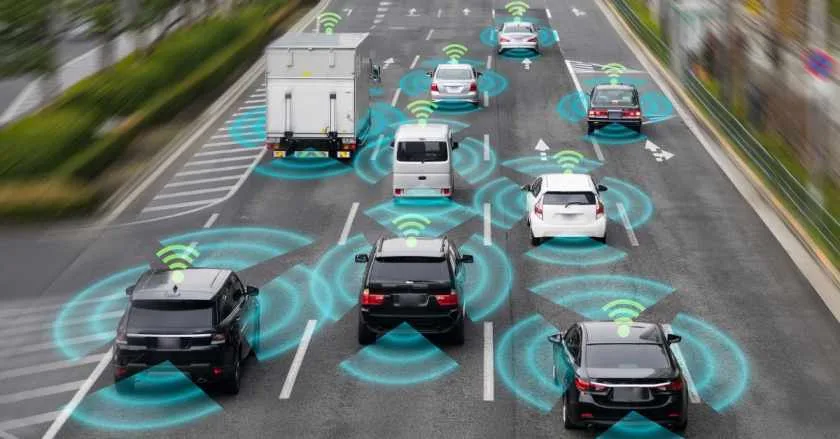Australian researchers have developed disruptive technology that allows autonomous vehicles to track walking pedestrians hidden behind buildings and cyclists obscured by larger cars, trucks and buses.
The autonomous vehicle uses revolutionary technology that allows it to “see” the world around it, including using x-ray style vision that penetrates to pedestrians in blind spots, and to detect cyclists obscured by vehicles. fast.
The iMOVE Cooperative Research Centre-funded project, in collaboration with the Australian Centre for Field Robotics at the University of Sydney and Australian connected vehicle solutions company Cohda Wireless, has just released its new findings in a final report after three years of research and development.
The applications of the technology, which are marketed by Cohda, involve an emerging and promising technology for intelligent transport systems (ITS) called cooperative or collective perception (CP).
Using roadside ITS information sharing units equipped with additional sensors such as cameras and lidar (“ITS stations”), vehicles can share what they “see” with others. using vehicle-to-X communication (V2X).
This allows autonomous vehicles to tap into different points of view. Being connected to a single system dramatically increases the range of perception, allowing connected vehicles to see things that they would not normally see.
Engineers and scientists who developed the technology said it could benefit all vehicles, not just those connected to the system.
“This is a game-changer for human-operated vehicles and autonomous vehicles which we hope will dramatically improve the efficiency and safety of road transport,” said Professor Eduardo Nebot of the Australian Centre for Field Robotics.
“The connected vehicle was able to track a pedestrian who was visually impaired by a building with CP information. This succeeded seconds before his local perception sensors or the driver could possibly see the same pedestrian around the corner, giving the driver or navigation extra time. “Stacks to respond to this safety hazard,” he said.
Another experiment demonstrated the ability of CP technology to safely interact with pedestrians and respond based on perceptual information from the ITS station on the roadside.
The three-year project also demonstrated the expected behaviour of a connected vehicle when interacting with a pedestrian approaching a designated intersection area.
“With the help of the ITS system, the networked autonomous vehicle has succeeded in taking preventive measures: braking and stopping in front of the pedestrian crossing area based on the predicted movement of the pedestrian,” said Professor Nebot.
“Pedestrian tracking, forecasting, path planning and decision making were based on perception information from ITS roadside stations.
“CP enables intelligent vehicles to overcome the physical and operational limitations of onboard sensing sensors,” he said.
Project lead researcher Dr. Mao Shan said the study confirmed that the use of CP can improve the awareness of vulnerable road users and improve safety in many traffic scenarios.
“Our research has shown that a connected vehicle can ‘see’ a pedestrian around a bend. More importantly, we are demonstrating how connected autonomous vehicles can autonomously and safely interact with walking and walking pedestrians, relying only on information from the ITS roadside station, ”he said.
Cohda Wireless Chief Technical Officer Professor Paul Alexander said the new technology “has the potential to increase safety in both human-driven and autonomous vehicle scenarios.”
‘CP enables intelligent vehicles to overcome the physical and practical limitations of on-board perception sensors and to embrace improved perception quality and robustness,’ said Professor Alexander.
“This could reduce the cost per vehicle to facilitate the massive implementation of CAV technology.”
Professor Alexander said that the use of CPs for manually driven connected vehicles “also brings an interesting advantage in enabling perception capability without fitting the vehicle with perception sensors and associated processing unit.”
IMOVE Managing Director Ian Christensen said the project is an excellent example of the industry collaborating with scientists to bring new innovations, commercial and public goods to the benefit of not only Australians, but also road users around the world, including pedestrians and cyclists.
“When we bring industry and scientists together, we can achieve many great things as a nation. IMOVE CRC is proud to have initiated this exciting project and many others like it that aim to have our best and brightest minds work together to develop new technologies and innovations to meet real-world problems and needs, ”Christensen said.







